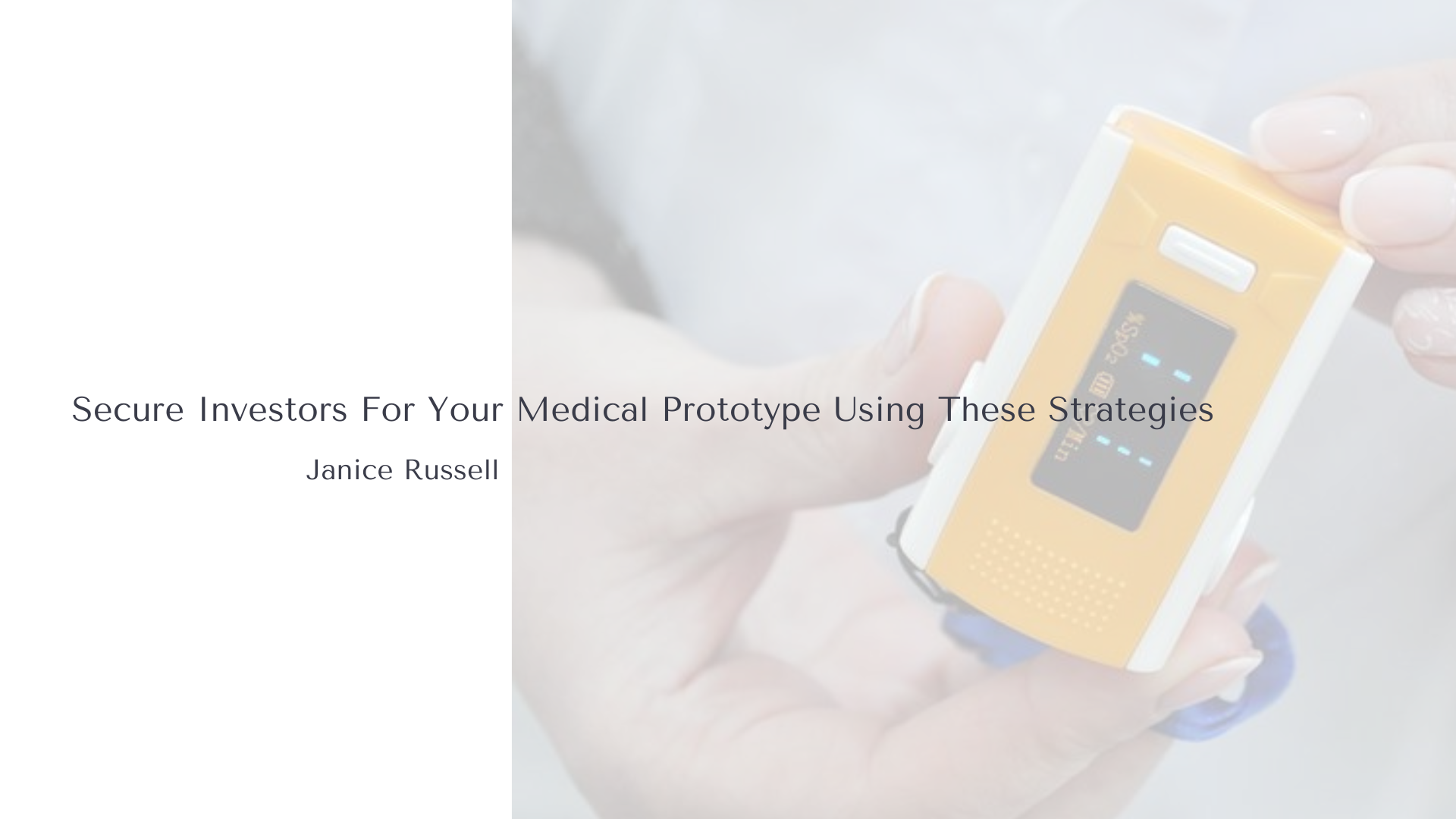
Secure Investors For Your Medical Prototype Using These Strategies
In an era marked by rapid technological advancements and the ceaseless pursuit of scientific knowledge, the role of medical prototypes in catalyzing monumental breakthroughs in healthcare is undeniable. For these nascent technologies to thrive and ultimately improve patient outcomes, securing investments is paramount. This article, courtesy of the Southern Medical Association, aims to elucidate the strategic steps required to attract and secure crucial investments, ensuring that revolutionary medical prototypes transition from concept to reality.
1. Demonstrate Effectiveness and Safety
Before potential investors part with their capital, they need irrefutable evidence of a prototype's viability. Comprehensive testing and validation not only demonstrate the prototype's effectiveness but also underscore its safety. It allows potential issues to be identified and addressed early on, reducing the risk of costly changes or recalls later. Moreover, it can also provide initial data for regulatory submissions, which is a crucial factor for investors considering the highly regulated nature of the medical device industry. A solid foundation of empirical evidence acts as a beacon, drawing in investors keen on supporting groundbreaking innovations.
2. Conduct Well-Designed Clinical Trials
Beyond initial testing, well-orchestrated clinical trials serve as the gold standard in the healthcare realm. By demonstrating a prototype's efficacy and safety in real-world scenarios, these trials provide tangible proof of its potential impact, and they can even be done remotely in some cases. Robust scientific validation through these trials can significantly sway investor decisions, emphasizing that their resources will be channeled toward a prototype with verifiable results.
3. Collaborate with Respected Healthcare Professionals
Medical prototypes benefit immensely when endorsed by recognized figures in the healthcare domain. Collaboration with esteemed healthcare professionals and thought leaders can amplify a prototype's merits, granting it instant credibility to investors. Start by identifying professionals who are influential in your niche, and approach them with a well-prepared pitch. This should be similar to an investor pitch in that it needs to include a clear explanation of your product, its benefits, how it differs from existing solutions, and the positive impact it could have on patient care. Offer them the opportunity to test your prototype and provide feedback, and be open to their insights.
4. Provide Market Research Data
Investors, being savvy stakeholders, need assurance that there exists a tangible demand for the prototype in question. Offering robust market research data can effectively illustrate the prototype's relevance and need within the healthcare ecosystem. Start by conducting thorough market research to identify existing gaps in the healthcare sector that your product could fill. This can be done through online surveys, focus groups, or interviews with healthcare professionals and potential users. Additionally, consider looking into industry reports, studies, and statistics that can provide insights into current trends and future projections. Such data-driven insights can be the deciding factor for investors contemplating the economic viability of the innovation.
5. Secure Intellectual Property Rights for Market Advantage
To truly stand out in the competitive healthcare landscape, prototypes must have a distinctive edge. Securing intellectual property rights, whether through patents, trademarks, or copyrights, ensures this uniqueness remains protected. For investors, these rights also offer an assurance: that their investment is safeguarded against imitators, ensuring a competitive market advantage.
6. Source Components Like Sensors and Transducers
The quality and reliability of a medical prototype often hinge on the components it utilizes. By sourcing these components from reputable global suppliers, one ensures the product's durability and effectiveness. From transducers that sense pressure to a sensor for handsets and more, these technological marvels enable precise monitoring and diagnosis for patients. Investors, particularly those attuned to technological innovations, are likely to be captivated by prototypes harnessing such cutting-edge capabilities. Look for a seller that offers inventory updates in real-time so you’ll always have access to the parts you need.
7. Form Strategic Partnerships
Leveraging the might of established entities in the healthcare domain can be instrumental. By forging strategic partnerships with healthcare organizations, pharmaceutical giants, or medical device manufacturers, you can gain access to invaluable resources and expertise. These collaborations, symbiotic in nature, not only enhance the prototype's prospects but also present a more compelling case for potential investors.
In conclusion, as we stand on the brink of numerous healthcare revolutions, the role of medical prototypes as harbingers of change is clear. However, without the crucial fuel of investment, many of these promising innovations might never see the light of day. By adhering to the steps outlined above, entrepreneurs and innovators can exponentially increase their chances of securing investments. As the world keenly anticipates the next wave of healthcare breakthroughs, ensuring that medical prototypes receive the support they deserve is not just beneficial—it's imperative.
Interested in joining the Southern Medical Association? Learn more today.
Janice Russell believes the only way to survive parenthood is to find the humor in it. She created Parenting Disasters so that parents would have a go-to resource whenever they needed a laugh, but also to show parents they aren’t alone. She wants every frazzled parent out there to remember that for every kid stuck in a toilet, there’s another one out there somewhere who’s just graced their parents’ walls with some Sharpie artwork!
